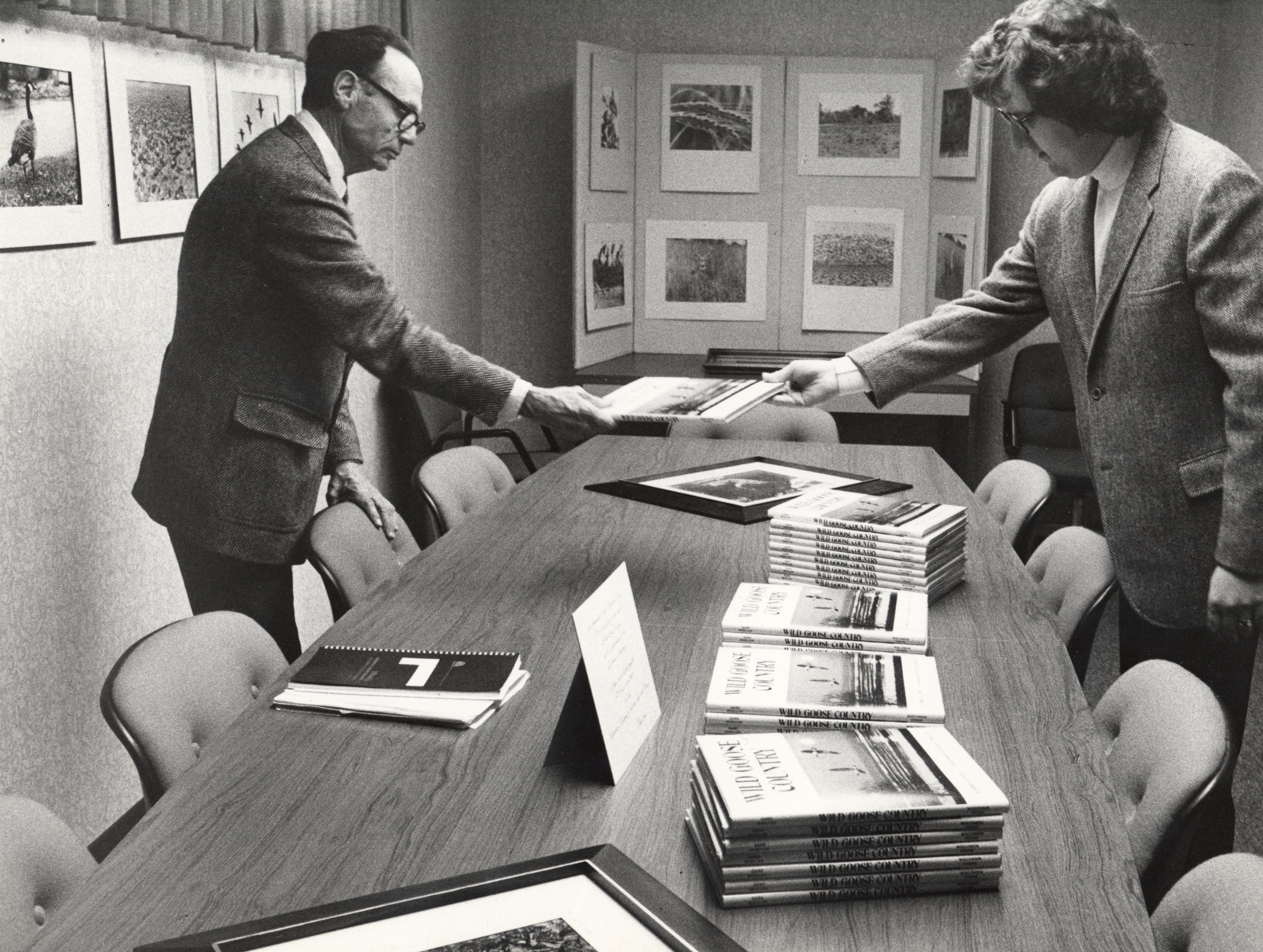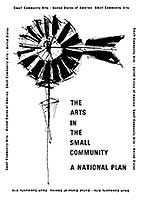Photo provided courtesy of the University of Wisconin-Madison Archives.
The Arts in the Small Community
(The Windmill Project)
An Invitation
In 1966, Robert E. Gard and his Community Arts Development team at the University of Wisconsin-Madison received a three-year grant from the National Endowment for the Arts to assist five rural communities in a bold community arts development effort in whatever way was most relevant to them. In 1969, The Arts in the Small Community: A National Plan was published.
It’s clear that the perspective of this program is not limited to rural communities. Wholistic development of the community via the arts, and development of local participation in the arts, is relevant in any small community, whether rural or in an urban neighborhood.
The Gard Foundation is celebrating the 50th anniversary of this work with its Oral History project, a Symposium, a reinvigorated website, and a publication of Gard’s community arts writing.
Why not explore, celebrate, and further your own small community during this period?
Download our new eBook!
1966 Edition:
![]() The Arts in the Small Community – A National Plan
The Arts in the Small Community – A National Plan
(Affectionately known as “The Windmill Book” )
In 1966, the National Council on the Arts awarded its first grant for development of the arts in small communities.
awarded to the Office of Community Arts Development, Wisconsin Idea Theatre of University Extension, The University of Wisconsin, Madison. The grant, financed by the National Endowment for the Arts, was to be an extension of the aims of the Wisconsin Idea Theatre and dealt specifically with ways of developing greater interest and participation in the arts in communities of 10,000 or less.Pilot research was conducted in five Wisconsin communities — Portage, Waupun, Rhinelander, Spring Green and Adams-Friendship — and this national plan is a result of what was tried and accomplished, or what failed to be accomplished, in these five places.
2006 Edition:
The Arts in the Small Community 2006
Maryo Gard Ewell and Michael F. Warlum [In PDF format — requires Adobe Acrobat]
This new version of The Arts in the Small Community – a National Plan maintains the organization and all the “big” and timeless ideas of the original as well as the examples from the five test communities, but has supplemented it with contemporary examples from
communities all across the country including urban and suburban. Discussions on business, public education, and communications were rewritten to reflect the evolution on these fronts in the past thirty-five years. An appendix summarizes what is happening in the test communities today.
With a forward by Robert L. Lynch, President and CEO of Americans for the Arts, and supported in part by grants from the Wisconsin Arts Board with funds from the National Endowment for the Arts’ Challenge America program and from The Evjue Foundation, Inc., The Arts in the Small Community 2006 passes on the story of the original experiment and what it has taught to new generations of arts development practitioners and visionaries.
Supporting Material:
![]() Supplementary Reports[In PDF format — requires Adobe Acrobat]
Supplementary Reports[In PDF format — requires Adobe Acrobat]
The national plan and the following supplementary reports were written by Robert E. Gard, Ralph Kohlhoff, Michael Warlum, Kenneth Friou and Pauline Temkin.
Running To Catch Up with the People
Running to Catch Up with the People: A Conversation with Robert Gard, Ralph Kohlhoff and Michael Warlum, 1969 is a transcript of conversations which took place in the offices of Wisconsin Idea Theater at the University of Wisconsin, Madison, during the spring of 1969. In this last year of the Arts in the Small Community project for the National Endowment for the Arts, one of the commitments was to disseminate what had learned in the three-year experiment.
![]() Planning For Grassroots Arts Development: A Research Study of Nine Communities in Transition
Planning For Grassroots Arts Development: A Research Study of Nine Communities in Transition
by Maryo Gard Ewell and Peter Ewell [In PDF format — requires Adobe Acrobat]
This 1975 research assumes that democratic, grass-roots art is a basic goal of arts developers and community arts leaders, and attempts to delineate steps to this goal. The authors surveyed nine Wisconsin small communities — Spring Green, Waupun, Portage, Adams-Friendship, Rhinelander, Highland, Baraboo, Antigo, Wautoma — on their attitudes towards the arts, and the specific reactions of five of these communities towards the arts program for which they had been the setting.
![]() What Can We Laern from the Past to Help Inform the Future? : Best Practices in Arts Development
What Can We Laern from the Past to Help Inform the Future? : Best Practices in Arts Development
by Maryo Gard Ewell (2007) [In PDF format — requires Adobe Acrobat]
This paper was printed as a Monograph in December, 2009: “Effective Community Arts Development: 50 Tips for 50 Years” and is also available as a free download at: http://www.americansforthearts.org/by-program/reports-and-data/research-studies-publications/americans-for-the-arts-publications/monographs
![]() Michael Warlum Reflects on “The Arts in the Small Community,” Fifty Years Later
Michael Warlum Reflects on “The Arts in the Small Community,” Fifty Years Later
The Gard Foundation conducted a lengthy interview with Dr. Michael Warlum, including additional information about The Arts in the Small Community program, and the interview is at http://digital.library.wisc.edu/1793/70389
Research and Reflection
- Research Studies – Designing Policy for Arts Development
 Best Practices Gleaned From the Arts in the Small Community Project
Best Practices Gleaned From the Arts in the Small Community Project Reflections on Arts in the Small Communities Surveys
Reflections on Arts in the Small Communities Surveys Learning From the Arts in the Small Communities Project
Learning From the Arts in the Small Communities Project


